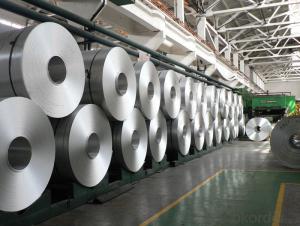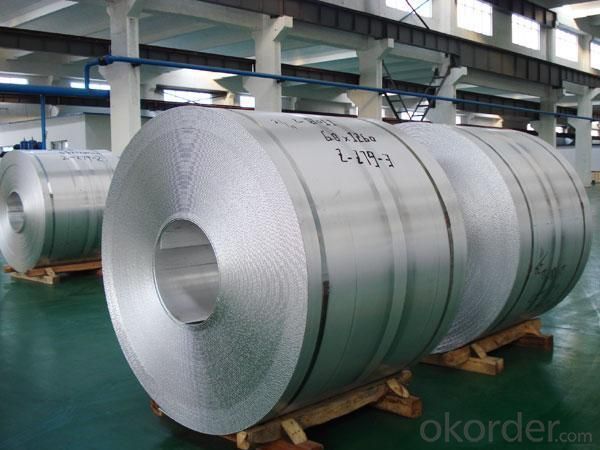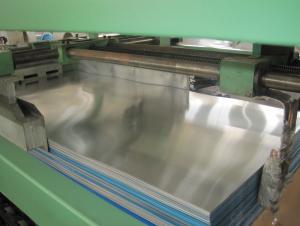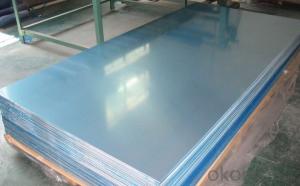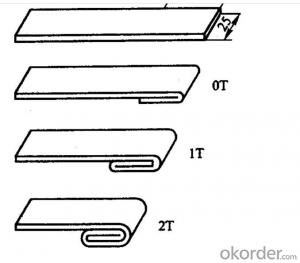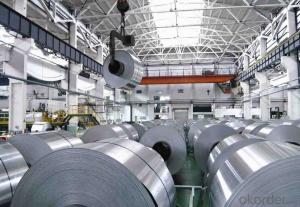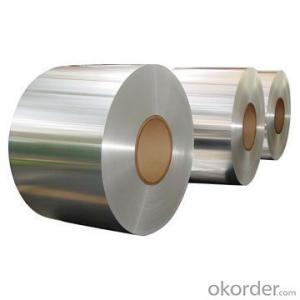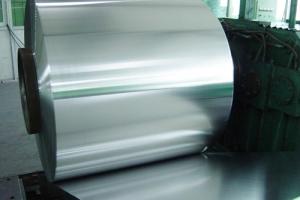Thin Aluminum Sheets for Sale - CC Aluminium Coils for Cookware Production
- Loading Port:
- Shanghai
- Payment Terms:
- TT OR LC
- Min Order Qty:
- 5 m.t.
- Supply Capability:
- 20000 m.t./month
OKorder Service Pledge
OKorder Financial Service
You Might Also Like
Specification
1.Structure of CC Aluminium Coils of Cookware
Continuous Casting Aluminium Strip in Coil is one semi-finished aluminium material. This strip can be rolled down to aluminium coil,sheet,circle ect. The alloy AA1050 is widly used in building, industry ect. Its weight is much lower than steel. So many customers choosed aluminium material instead of steel.
2. Main features of CC Aluminium Coils of Cookware
a.Competitive price---We have our own mills and can produce mill finished aluminium coils, so we can control the production cost better.
b.Professional after-sale service---We have more than 15 years exportation experience and you need not worry about the exporation problems.
c.Fast delivery time---We can control the delivery time within 35 days.
3. Image
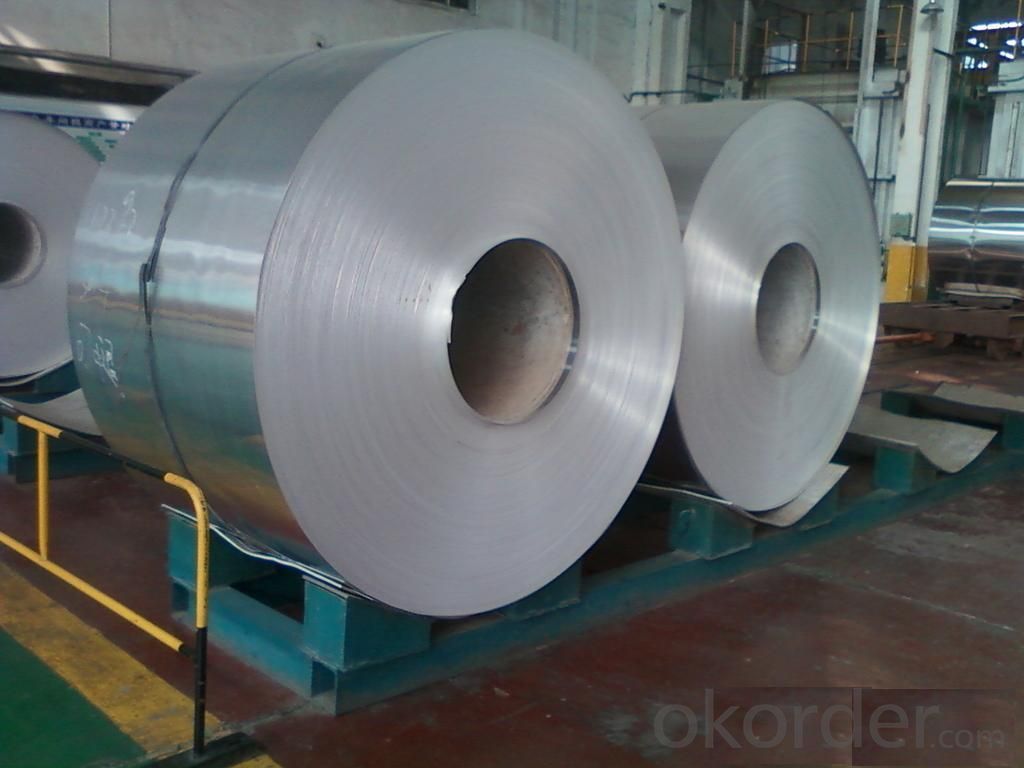
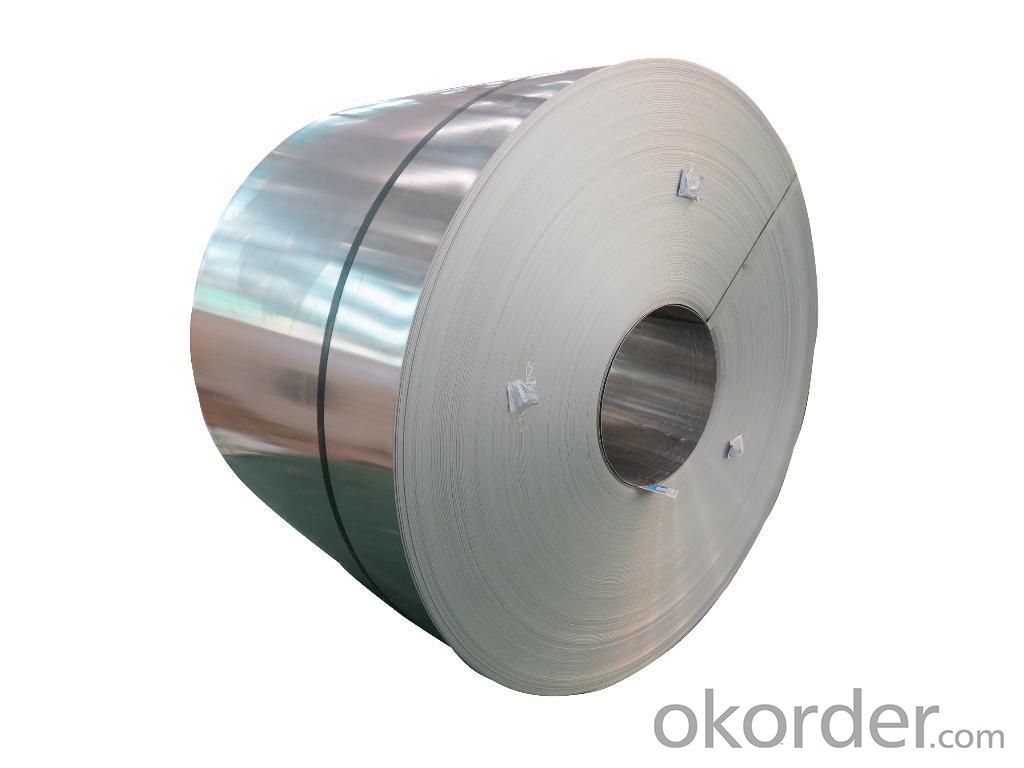

4. Product Specification
| Alloy | Temper | Style | Thickness | Width |
| AA1100 | H14 | Continuous Casting | 0.2mm-3mm | 1000mm-1500mm |
5.FAQ:
What is the quality standard?
---Usually our standard is GB3880-2006
What is the largest width?
---It is 2300mm
What is the MOQ?
---Usually we can accept 80 tons.
- Q: What is the typical machinability of aluminum sheets?
- The machinability of aluminum sheets is generally considered to be excellent. Aluminum is known for its relatively low density and softness, which makes it easier to machine compared to other metals. It has good thermal conductivity, allowing for efficient removal of heat generated during machining, and it also has a low melting point, reducing the risk of overheating. Additionally, aluminum has good chip formation characteristics, resulting in easy chip evacuation and reduced tool wear. However, the machinability of aluminum can vary depending on factors such as alloy composition, tempering, and surface finish. Overall, aluminum sheets are widely regarded as being highly machinable.
- Q: Can the aluminum sheets be used for heat dissipation purposes?
- Yes, aluminum sheets can be used effectively for heat dissipation purposes due to their excellent thermal conductivity.
- Q: Can 101 aluminum sheets be anodized for medical equipment applications?
- Yes, 101 aluminum sheets can be anodized for medical equipment applications. Anodizing is a process that creates a protective layer on the surface of aluminum, enhancing its corrosion resistance, durability, and aesthetic appearance. It is commonly used in the medical industry to improve the performance and longevity of equipment, as well as to maintain cleanliness and sterility. The specific alloy of aluminum used, such as 101, does not typically impact the anodizing process, as anodizing can be applied to various grades of aluminum. However, it is important to consult with an anodizing specialist or manufacturer to ensure that the specific alloy is suitable for the intended medical equipment application and to determine the most suitable anodizing process and specifications.
- Q: What are the common uses of aluminum sheets?
- Aluminum sheets possess excellent properties, rendering them highly versatile and extensively utilized across various industries. Their applications encompass: 1. Construction: In the construction industry, aluminum sheets find common usage for roofing, siding, and insulation purposes. Their lightweight nature, durability, and resistance to corrosion make them ideal for shielding against the elements. 2. Transportation: The automotive and aerospace industries heavily rely on aluminum sheets. These sheets contribute to the manufacturing of car bodies, truck trailers, and aircraft parts owing to their impressive strength-to-weight ratio. Consequently, the utilization of aluminum sheets aids in enhancing fuel efficiency and reducing overall vehicle weight. 3. Packaging: Aluminum sheets serve as a popular choice for packaging purposes, specifically within the food and beverage industry. Cans, foils, and containers are frequently crafted from aluminum sheets, as they effectively safeguard packaged products by acting as barriers against moisture, light, and oxygen. 4. Electrical and Electronics: The electrical and electronics industry benefits from the application of aluminum sheets due to their exceptional conductivity. Their utilization extends to the manufacturing of electrical enclosures, heat sinks, and wiring, as they efficiently dissipate heat and protect delicate electronic components. 5. Marine Industry: Aluminum sheets hold significant value within the marine industry due to their resistance to corrosion. They are employed in the construction of boat hulls, ship fittings, and other marine equipment. The ability of aluminum sheets to withstand harsh marine environments, alongside their lightweight properties, renders them an appealing choice. 6. Decorative Applications: Architectural applications often feature aluminum sheets for their aesthetic appeal. These sheets can be effortlessly shaped, formed, and colored to create diverse decorative elements like wall cladding, ceilings, and decorative panels. In conclusion, aluminum sheets serve as a fundamental material across numerous industries, including construction, transportation, packaging, electrical and electronics, marine, and decorative applications. Their versatility and significance are evident in their widespread utilization throughout various sectors.
- Q: What is the difference between aluminum plate and aluminum-plastic plate?
- Aluminum sheet: aluminum or aluminum alloy (strip) as the base material, processed by molding and surface protection and decorative coating or anodized film of single aluminum sheet (sheet) called aluminum veneer. Aluminum veneer is widely used for architectural decoration called architectural aluminum veneer, the implementation of GB/T23443-2009 standards.Two, aluminum plate: the full name is called aluminum-plastic composite board. The utility model relates to a three layer composite decorative board with plastic as core material, aluminum sheet (sheet) on both sides, and protective coating and decorative coating on the surface of aluminum. There are two kinds of aluminum-plastic panels, one is common decorative aluminum plate, the implementation of GB/T22412-2008; one kind of building curtain wall with aluminum plate, the implementation of GB/T17748-2008.The difference between the three, aluminum single plate and aluminum plate: 1, aluminum veneer is a single plate, only raw materials, namely, aluminum strip and aluminum plate; three layer composite plate, the two sides for aluminum (film) commonly known as aluminum substrate or aluminum substrate, the middle layer is a plastic commonly known as plastic core material, raw materials there are two kinds, one is aluminum plate, two plastic core material; 3, aluminum veneer thickness is generally of no limit, if too thick aluminum plate aluminum base composite is not strong, at present in the world within the scope of the general requirements of aluminum substrate thickness limit of not more than 1mm. The above is the main difference between the aluminum sheet and the aluminum-plastic plate. Upstairs answer, some are wrong, for example, "2", the quality is different: because aluminum plate is less than aluminum plate, aluminum layer, so the aluminum plate than aluminum plate quality must be worse." Please survey.
- Q: could magnet attract iron with the seperation of rubber and aluminum sheets?
- no problem.
- Q: What is the typical corrosion resistance of aluminum sheets?
- The typical corrosion resistance of aluminum sheets is quite high. Aluminum naturally forms a protective oxide layer on its surface, which helps to prevent further corrosion. This oxide layer acts as a barrier, preventing moisture and other corrosive elements from reaching the underlying metal. Additionally, aluminum is also highly resistant to many common types of corrosion, such as rusting and pitting. However, the corrosion resistance of aluminum can vary depending on various factors, such as the alloy composition, surface treatment, and exposure to harsh environments. Overall, aluminum sheets are known for their good corrosion resistance, making them suitable for a wide range of applications in various industries.
- Q: How does the thermal conductivity of aluminum compare to other metals?
- Compared to many other metals, aluminum boasts a relatively high thermal conductivity. It is often hailed as one of the foremost heat conductors among common metals. With a thermal conductivity of approximately 205 watts per meter kelvin (W/m·K), aluminum surpasses copper (about 401 W/m·K) and even silver (about 429 W/m·K). As a result, aluminum excels at efficiently transferring heat, making it a widely favored option for heat sinks, radiators, and various applications necessitating effective heat dissipation. Nonetheless, it is worth mentioning that certain metals, such as diamond and graphene, surpass aluminum in terms of thermal conductivity.
- Q: Can aluminum sheet be used for cookware?
- Indeed, cookware can indeed employ aluminum sheets. Aluminum, being renowned for its superb heat conductivity, facilitates even heat dispersion and rapid heating. It possesses the attributes of being lightweight, long-lasting, and impervious to rust and corrosion. Moreover, aluminum cookware is reasonably priced and comparatively effortless to maintain. Nevertheless, pure aluminum proves to be a malleable metal, thus necessitating its amalgamation with other substances such as stainless steel or nonstick coatings to fortify its endurance and nonstick qualities.
- Q: How are aluminum sheets cut or shaped?
- Aluminum sheets can be cut or shaped using various methods such as shearing, laser cutting, waterjet cutting, or CNC milling. Shearing involves using a specialized machine to cut the sheet along a straight line. Laser cutting utilizes a high-powered laser beam to precisely cut or engrave the aluminum sheet. Waterjet cutting involves the use of a high-pressure jet of water mixed with an abrasive material to cut through the sheet. Lastly, CNC milling uses computer-controlled machines to remove material from the aluminum sheet and create intricate shapes or designs.
Send your message to us
Thin Aluminum Sheets for Sale - CC Aluminium Coils for Cookware Production
- Loading Port:
- Shanghai
- Payment Terms:
- TT OR LC
- Min Order Qty:
- 5 m.t.
- Supply Capability:
- 20000 m.t./month
OKorder Service Pledge
OKorder Financial Service
Similar products
Hot products
Hot Searches
Related keywords
